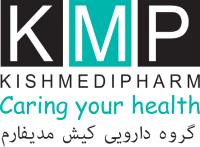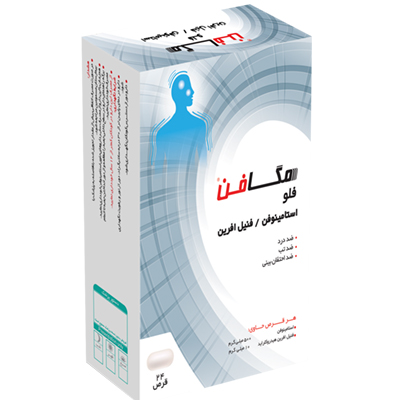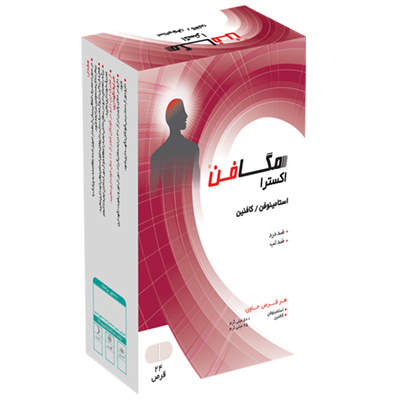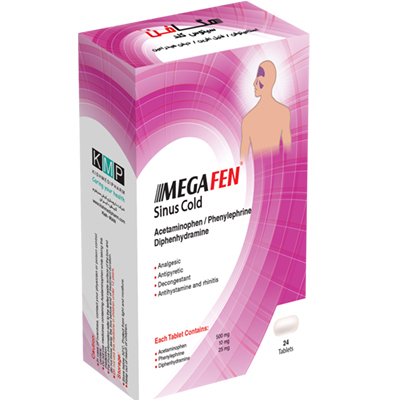Rosacea is a chronic skin disorder that many people suffer from without even knowing it. Known as the silent enemy of the skin, this condition can gradually cause the skin to become inflamed, red, and chronically inflamed, significantly impacting a person’s quality of life and self-confidence. Unlike regular acne, rosacea is a complex skin condition that requires special attention and a deep understanding of its causes and treatment methods.
Although the appearance of this disease may seem simple, inflammatory and vascular processes in the skin cause it to worsen and may worsen over time without treatment. Therefore, a precise and scientific understanding of acne rosacea is essential to combat this problem. Several factors such as skin sensitivity, environmental changes, stress and even diet play a role in the onset and exacerbation of this disease.
In this article, we take a comprehensive look at rosacea. Here are all the important things you need to know about the condition, from its early symptoms to effective treatment options.
Are acne rosacea and acne vulgaris the same?
No, acne rosacea and acne vulgaris are two different skin conditions, although some of their symptoms may be similar. Acne vulgaris It usually occurs in teenagers and young adults and is mostly caused by clogged pores, oil buildup, and bacterial growth. This type of acne is characterized by blackheads, whiteheads, and pus.
But rosacea is more common in adults and is a chronic condition that causes persistent redness, inflammation, swelling, and sometimes small, red, pus-free pimples. In rosacea, symptoms are usually more prominent in the midface and are accompanied by prominent blood vessels. In short, the two conditions differ in their causes, symptoms, and treatment. Understanding these differences is crucial for choosing the right care and treatment for rosacea and other types of acne.
Is rosacea different from regular acne?
Have you ever been confused by persistent redness and inflammation of the skin? Rosacea, often confused with regular acne, has a different and more complex reality. Unlike regular acne, which is mostly caused by a buildup of oil and bacteria, rosacea is caused by chronic inflammatory reactions and skin sensitivities that require a specific understanding and treatment approach.
The fundamental differences between these two types of acne lie in the way they develop and the severity of their symptoms; where the treatment of rosacea is much more specialized and precise. If you want to have clear, inflammation-free skin, it is essential to understand the subtle but important differences between these two skin conditions and benefit from specific rosacea treatment strategies. Here are some of the most common symptoms of this condition:
- Persistent redness in the center of the face (cheeks, nose, forehead, chin)
- Burning and itching sensation in red areas of the skin
- Small pustules similar to regular acne appear
- Presence of visible blood vessels (telangiectasia)
- Dry and flaky skin
- Hypersensitivity and skin disorders
- Eye inflammation, including dryness, redness, and irritation
- Exacerbation of symptoms due to environmental triggers or stress
- The need for specialized and precise rosacea acne treatment
The most common triggers of acne rosacea
Rosacea triggers can come from environmental, psychological, dietary, and even pharmaceutical factors. For example, extreme temperature changes or exposure to sunlight can cause the skin to flare up and become inflamed. Also, psychological stress and sudden emotions can increase inflammatory responses by stimulating the skin’s nervous system. Importantly, these triggers not only exacerbate symptoms, but may also make the treatment cycle longer and more complicated. Therefore, accurate identification and proper management of these factors is an integral part of rosacea treatment.
Rosacea triggers, due to their complex and multifactorial nature, require specialized investigations and scientific and personalized treatments. By controlling these factors, a person can gradually reduce inflammation and return their skin to balance and health. Now, to have a better understanding, the following will address the triggers of rosacea so that you can deal with this disease more purposefully.
- Extreme temperature changes: Extreme cold or heat causes blood vessels to dilate and the skin to flush.
- Direct sunlight: Ultraviolet rays irritate and inflame sensitive skin.
- Psychological stress and sudden emotions: Activation of the nervous system and increased inflammatory reactions.
- Consuming spicy foods: Irritates the skin and increases redness and inflammation.
- Alcoholic and caffeinated beverages: dilate blood vessels and increase skin sensitivity.
- Taking certain medications: Corticosteroids and certain diets can aggravate symptoms.
- Inappropriate cosmetic products: Irritating or heavy ingredients that make the skin more sensitive.
- Intense physical activity: Excessive heat and heavy sweating can increase inflammation.
- Environmental allergens: air pollution, dust, and irritating chemicals.
- Hormonal factors: Hormonal changes, especially in women, can affect the condition of the skin.
Identifying and properly managing these triggers is considered one of the main pillars of rosacea treatment. This not only provides better symptom control, but also plays an important role in preventing relapse. For this reason, attention to these factors must be seriously considered in any modern and scientific treatment plan to achieve lasting and effective results.
In another article, all the vital and scientific points you need to know about Acne treatment And to know the effective solutions to deal with it, it is explained comprehensively and accurately, read this valuable article.
Ways to prevent acne rosacea
Rosacea is a chronic and complex skin disorder that appears with redness, inflammation, and small, raised pimples on the face. This disease not only affects the appearance, but also disrupts the quality of life of the person. Rosacea and its treatment require special awareness and care to prevent the severity of symptoms. Prevention of this condition is possible by adopting scientific and practical solutions. The following will discuss various methods of preventing rosacea, each of which plays an important role in maintaining skin health. Types of methods of preventing rosacea:
- Control triggers: Environmental factors such as heat, extreme cold, wind, and sunlight are among the most important triggers of rosacea. Using appropriate sunscreen and physically protecting the skin can reduce the severity of attacks.
- Avoid irritating foods: Spicy foods, caffeine, and alcohol can aggravate skin inflammation. Adjusting your diet and avoiding these foods can help better control symptoms.
- Gentle skin care: Washing the skin daily with mild, alcohol-free cleansers prevents skin irritation and dryness. Using properly formulated moisturizers is also essential.
- Stress management: Stress is a known aggravating factor in rosacea and its treatment. Using relaxation techniques such as yoga, meditation, and deep breathing can help reduce symptoms.
- Use of prescription medications: In more advanced cases, it is necessary to consult a dermatologist for the use of topical or oral medications. These medications help control inflammation and prevent recurrence of the disease.
- Avoid unsuitable cosmetic products: Heavy cosmetic products or those containing irritating ingredients can worsen the skin condition. It is recommended to choose products specifically for sensitive skin and free of harmful ingredients such as perfume and alcohol.
- Regular visits to a dermatologist: Regular monitoring of skin condition and receiving specialized advice allows for the precise setting of a treatment and prevention plan.
Following these methods, along with scientific knowledge, is the best solution to combat this skin disease. Basic prevention is the key to maintaining healthy and beautiful skin against acne vulgaris and rosacea. Ultimately, effective preventive measures not only prevent acne from occurring, but also significantly help improve the treatment process and prevent the recurrence of this disease.
Effective treatments for acne rosacea
Rosacea is a chronic skin disorder characterized by redness, inflammation, and superficial pimples on the face that can significantly impact a person’s quality of life. There are a variety of ways to manage the condition. Rosacea and its treatment require a comprehensive, specialized approach to reduce symptoms and prevent them from worsening. Rosacea treatment not only improves the appearance of the skin, but also restores a person’s self-confidence. In this article, we will review a variety of effective treatments for this skin condition.
Home remedies for acne rosacea
Using home remedies for rosacea can be a good complement to medical treatments and help relieve inflammation and soothe the skin. Below, we will introduce the most effective home remedies and complementary treatments that can play an important role in controlling this condition. We will explain the types of home remedies for rosacea below:
- Cold compress: Applying a cold compress to inflamed areas of skin helps reduce redness and swelling. This simple but effective method can provide immediate relief for sensitive skin.
- Green Tea Oil: Due to its anti-inflammatory and antioxidant properties, green tea oil helps reduce inflammation and protect the skin from irritants, accelerating the improvement of rosacea.
- Aloe Vera: Aloe vera's natural gel has soothing and healing properties and can reduce inflammation and redness of the skin. Regular use of aloe vera helps to regenerate the skin.
- Natural Honey: Honey has antibacterial and moisturizing properties that help cleanse and repair the skin. Using a honey mask helps reduce pimples and inflammation caused by rosacea.
- Use chamomile tea: As a natural skin sedative, chamomile tea reduces inflammation and helps strengthen the skin's immune system. Compressing or washing the skin with chamomile tea is effective.
- Proper diet: Consuming anti-inflammatory foods and avoiding irritating foods such as spices and alcohol helps control symptoms and reduce the severity of the disease.
Using these home remedies can be a valuable supplement to treating acne rosacea, but it should be noted that in more severe cases, medical advice and specialized treatments are necessary. Combining home remedies with pharmaceutical treatments provides the best results in improving and controlling this disease and improving the quality of life. With these methods, you can return to calm and healthy skin and prevent the unpleasant complications of acne vulgaris and rosacea.
The best topical medications for acne rosacea
Rosacea is a chronic skin condition that causes redness, inflammation, and small pimples on the face and can affect a person’s quality of life. Choosing the best topical medications for rosacea is important in controlling and reducing the symptoms of this condition. Topical treatments are designed to reduce inflammation, redness, and prevent recurrence of the condition and are an integral part of treating rosacea. Below, we will introduce and explain the types of topical medications that are effective in dealing with this condition.
- Antibiotic creams and gels: Medications such as metronidazole and clindamycin, with anti-inflammatory and antibacterial properties, help reduce inflammation and control acne-causing bacteria.
- Topical retinoids: These medications help regulate the skin's cell renewal process, prevent breakouts by reducing pore blockage, and gradually reduce redness and inflammation.
- Anti-inflammatory creams: Ingredients such as azulene and topical isotretinoin have soothing and anti-inflammatory effects that help reduce irritation and redness.
- Antioxidant-Containing Products: Creams and serums that contain vitamins C and E help repair skin and reduce inflammatory damage by fighting free radicals.
- Topical anti-redness medications: Products with ingredients like chamomile extract and calamine help to heal redness faster and soothe sensitive skin.
- Special moisturizing creams: Using moisturizers that are free of alcohol and irritating ingredients helps to retain moisture and strengthen the skin's defense barrier.
Continuous and systematic use of these topical medications, along with adherence to care tips, leads to better disease control and reduces the need for oral medications with complications. Combining these methods with other therapeutic methods is the key to success in acne rosacea and its treatment. Also, the careful selection of the right medication by a specialist has a significant impact on the outcome of treatment and improvement of the quality of life of patients. These medications not only help to quickly relieve symptoms, but also prevent the progression and exacerbation of the disease and help maintain the health and beauty of the skin in the face of acne vulgaris and rosacea.
Acnemis topical gel One of the most effective medications for treating acne rosacea and various types of acne is a combination of clindamycin and tretinoin. Clindamycin acts as a strong antibiotic and helps reduce acne and redness by reducing bacteria that cause skin inflammation. Tretinoin also speeds up the healing process by stimulating cell renewal and preventing clogged pores.
However, the use of Acnomys gel during pregnancy is not recommended, as its ingredients may be harmful to the fetus. Therefore, pregnant women should avoid using this medication and be sure to consult their doctor about safer treatments.
Dry or oily skin: which is more prone to rosacea?
A question that is often asked is: Is dry or oily skin more prone to rosacea? The answer to this question can play a decisive role in choosing the best care and treatment methods.
First, it should be noted that rosacea and its treatment is a complex process that requires a detailed understanding of the characteristics of each skin type. Dry skin is usually more sensitive due to lack of moisture and greater vulnerability, and is more likely to become irritated and inflamed. On the other hand, oily skin, which is accompanied by excessive sebum secretion, creates a suitable environment for the growth of bacteria and skin inflammation. Both skin types can contribute to the appearance or exacerbation of rosacea symptoms in different ways.
People with dry skin often experience problems such as persistent redness, itching, and burning, which can aggravate rosacea. Dry skin damages the skin's natural defenses and increases its sensitivity to environmental factors. In contrast, oily skin, with its open pores and excessive sebum secretion, is prone to inflammation and pimples, which are classified as diseases similar to acne vulgaris and rosacea.
Ultimately, it is not possible to say for sure which skin type is more likely to develop rosacea, as genetic, environmental, nutritional, and lifestyle factors also play a significant role in the onset and severity of the condition. For this reason, rosacea treatment should be planned based on an accurate diagnosis of each individual's skin type and symptoms. Understanding the basic differences between dry and oily skin is key to choosing the right care products and preventing flare-ups.
Now that you know the importance of knowing your skin type when dealing with rosacea, it is recommended that you consult a dermatologist to better protect your skin and improve your quality of life and start specific and effective treatments based on your skin type. Smart prevention and targeted care are strategies that can free you from the scars caused by this chronic disease and restore your skin's natural health and beauty.
Knowing your acne type is important in choosing the best treatment for rosacea and other types of acne. For more comprehensive information on acne types and treatment options, you can visit our dedicated page on Cause of acne See.
Does rosacea affect the eyes?
Among chronic skin conditions, rosacea is not only known for its inflammation, redness, and superficial pimples on the face, but it can also enter a lesser-known territory: the eyes. It may come as a surprise, but many sufferers complain of burning, redness, and dryness in the eye area, unaware that these symptoms may be a continuation of their skin disorder. These symptoms appear insidiously and creepingly, but if ignored, they can lead to more serious eye complications such as blepharitis, corneal inflammation, or even persistent blurred vision.
The first encounter with ocular rosacea often begins with a foreign body sensation in the eye. A feeling as if a grain of sand is stuck in the eyelids, accompanied by itching or burning. Your eyes may appear red all the time, you may tear up for no reason, or your eyelids may even become swollen and extremely sensitive. These symptoms, while seemingly simple, are serious warning signs that you need to start treating rosacea.
Ocular rosacea is an inflammatory condition of the eyes in people with rosacea, which is accompanied by symptoms such as redness, dryness, itching, foreign body sensation, eyelid inflammation and even blurred vision. Contrary to popular belief, this type of disease is not limited to the skin and can lead to vision damage if left untreated. Early diagnosis and appropriate treatment play a key role in preventing the progression of this condition.
Can dietary changes help treat rosacea?
Scientific and empirical evidence suggests that dietary changes can play an effective role in the treatment of rosacea. Some foods can aggravate symptoms, while others can reduce inflammation and relieve symptoms. An anti-inflammatory diet, although not a substitute for medical treatment, can be a powerful supplement that can significantly improve skin quality. Useful foods in the anti-rosacea diet:
- Fatty fish (such as salmon and sardines)
- Dark leafy vegetables (spinach, kale)
- Turmeric
- Fresh ginger
- Yogurt and kefir (natural sources of probiotics)
- Extra virgin olive oil
- Antioxidant-rich fruits (berries, pomegranates, plums)
- Raw nuts and seeds (walnuts, flaxseeds)
- Green tea without sugar
- Sufficient and regular water throughout the dayTop of Form
Bottom of Form
Who is most at risk for acne rosacea?
Although rosacea and its treatment are complex challenges, knowing your risk factors can be a key step in preventing and managing the condition. Knowing whether you are at risk can help you tailor your treatment plan to your specific needs. Early intervention can help reduce inflammation and prevent permanent skin damage.
If you notice signs of persistent redness, inflammation, or small, scattered pimples on your skin and you fall into one of the high-risk groups, seeing a dermatologist and making lifestyle changes can help you get diagnosed and treated for rosacea. Prevention is always easier than cure, especially when your skin is talking to you. Groups at risk for rosacea:
- Middle-aged women (30 to 50 years old)
- People with fair skin, Fitzpatrick type I, and
- Those with a family history of acne rosacea
- People under chronic stress
- People who work in hot, closed environments
- Athletes exposed to direct sunlight
- Frequent consumers of spicy foods, hot drinks, or alcohol
- People with a history of skin allergies or autoimmune diseases
- People taking certain medications, such as corticosteroids or niacin
- Those who use substandard or heavy cosmetics
Conclusion
Rosacea is a chronic and complex skin condition that is characterized by redness, inflammation, and superficial pimples on the face. In this article, we will explore the causes, symptoms, prevention, and effective treatment of rosacea so that you can better understand it and find a way to restore your skin's health and beauty.
It is worth noting that by modifying your lifestyle, avoiding environmental triggers, targeted skin care, and consulting with a doctor, you can control the progression of the disease and minimize symptoms. Rosacea and its treatment require a combined approach that includes drug treatments, home care, and nutritional principles. Since this is a chronic and recurring disease, continuity and follow-up of treatment play a vital role in improving the condition of the skin.
Paying attention to early signs and taking prompt action is key to preventing lasting damage and restoring healthy, youthful skin. Ultimately, a scientific and informed approach can help you break out of the chronic cycle of this condition.




